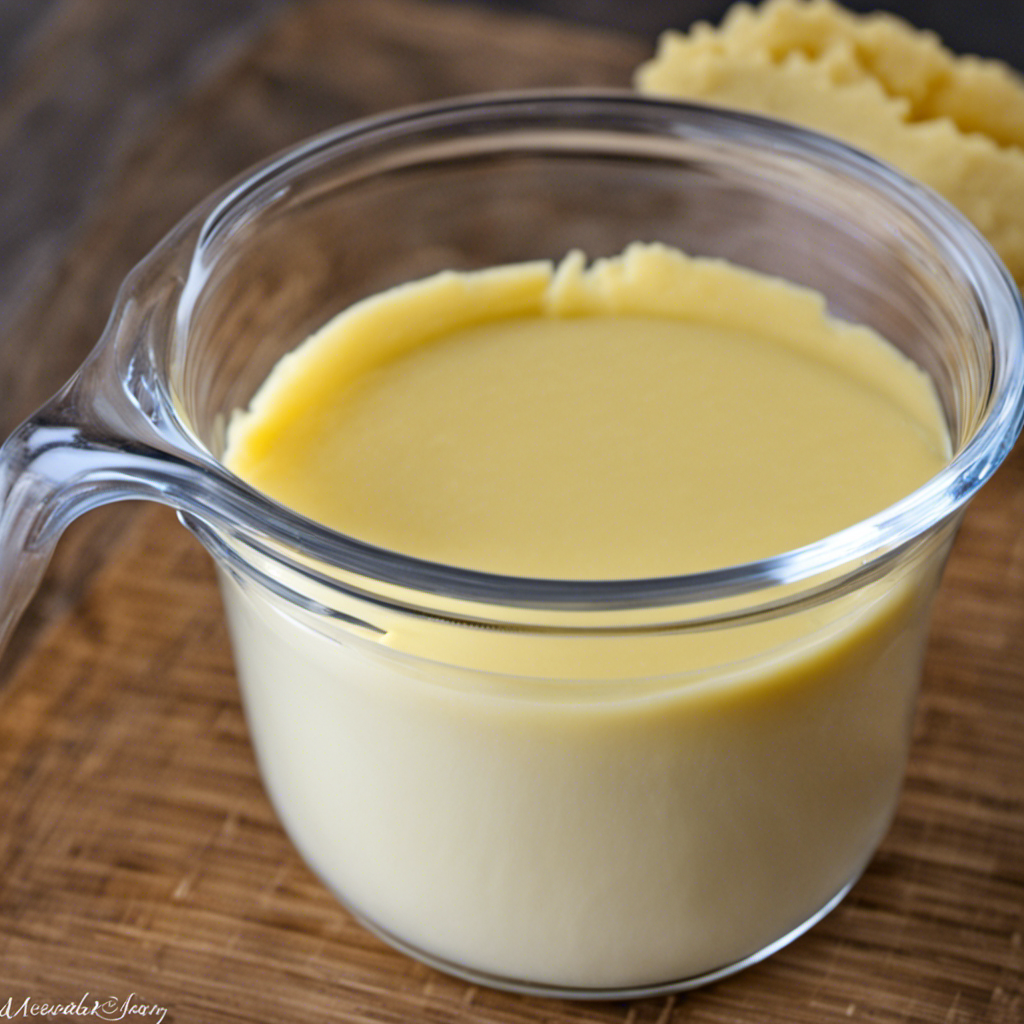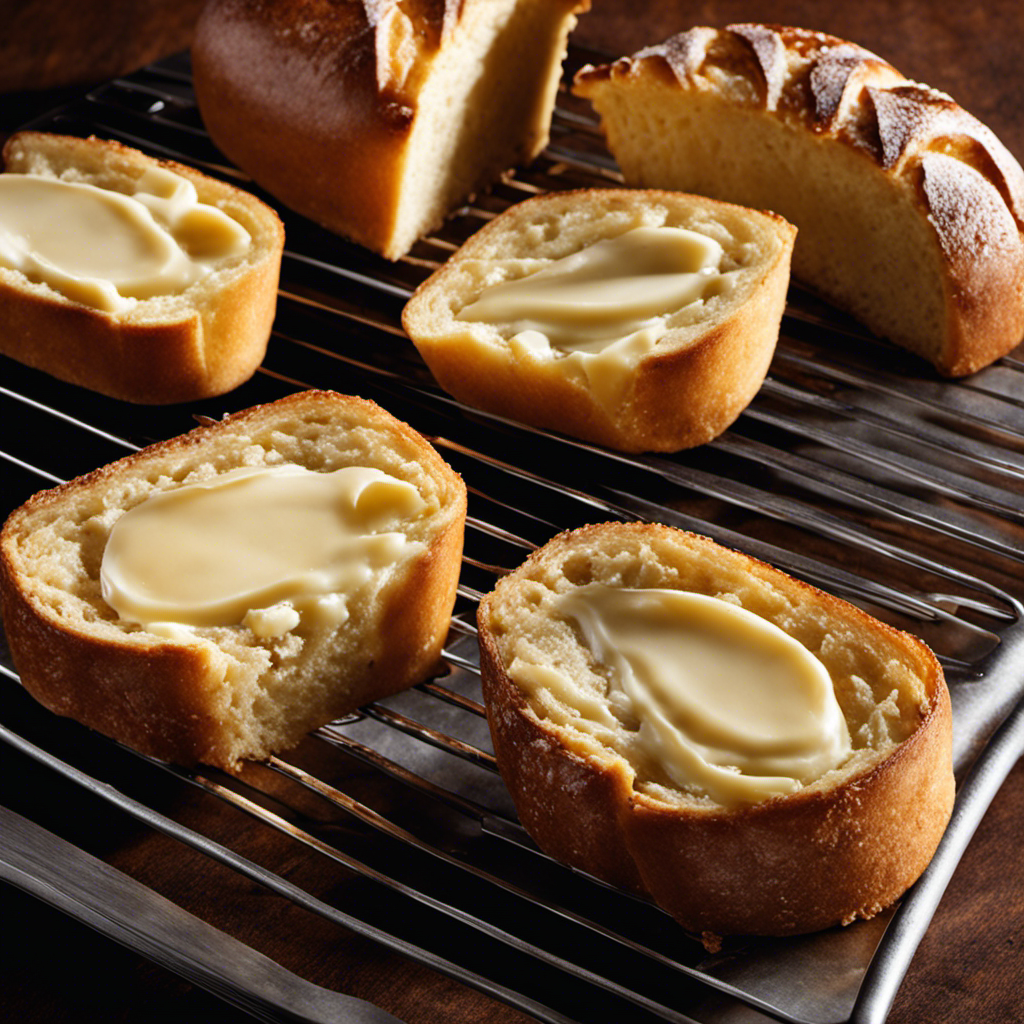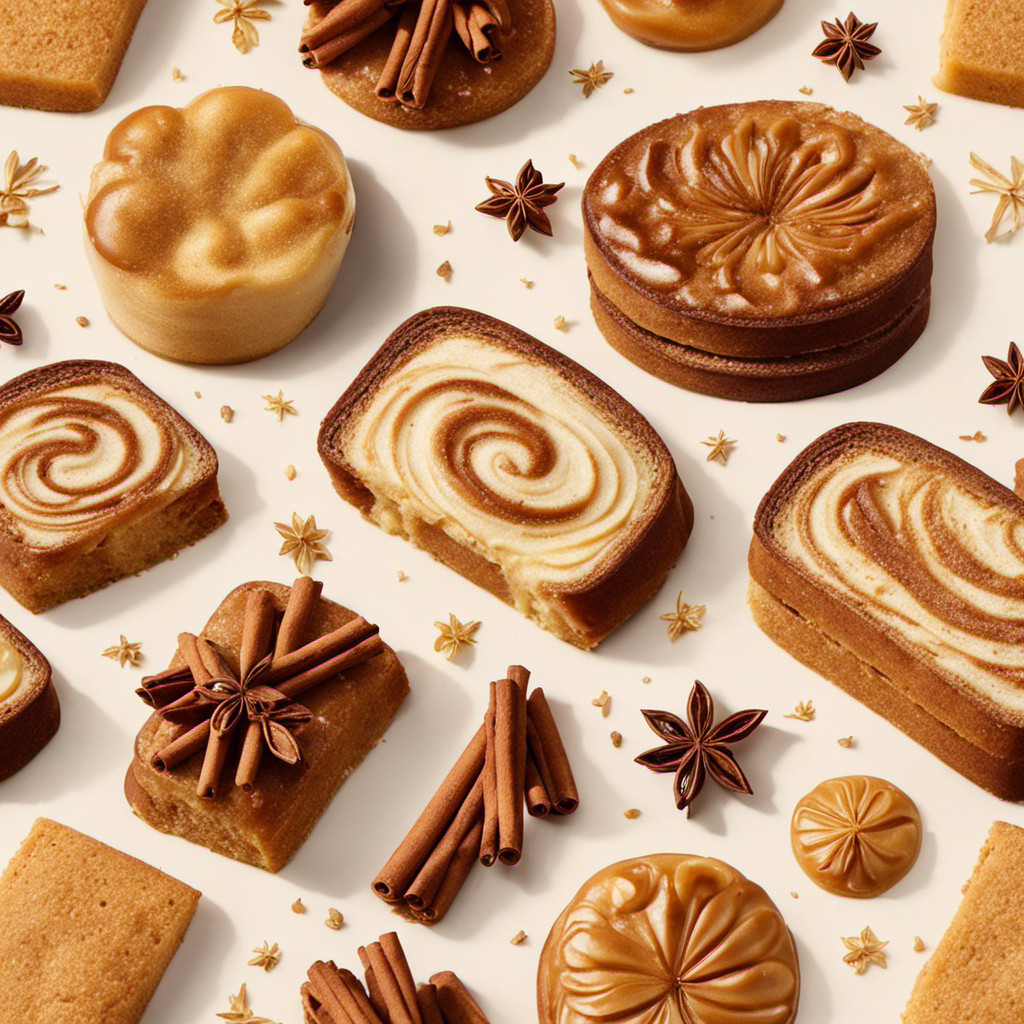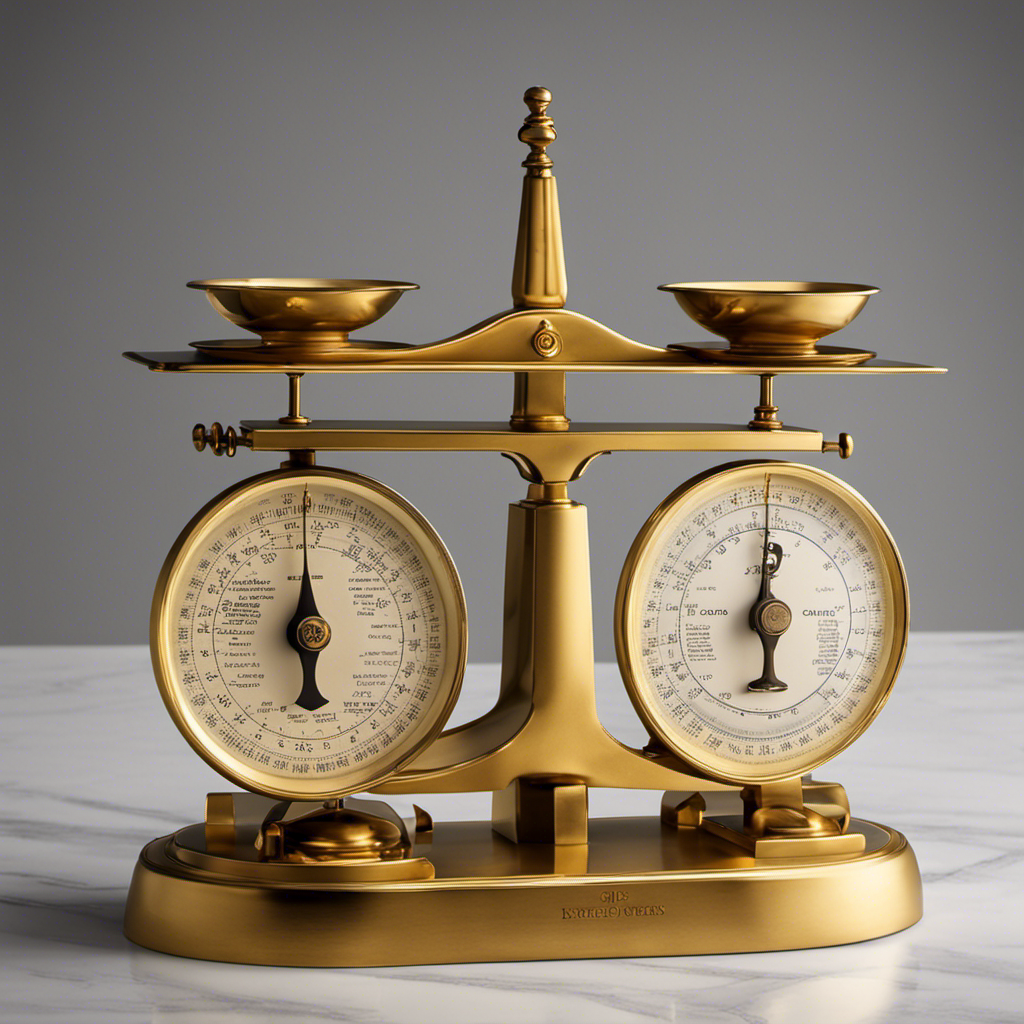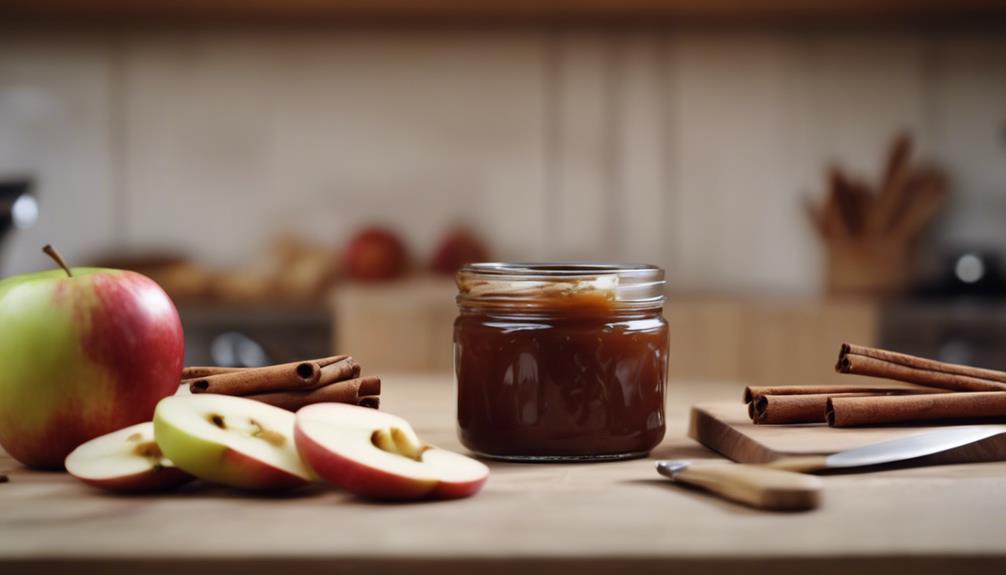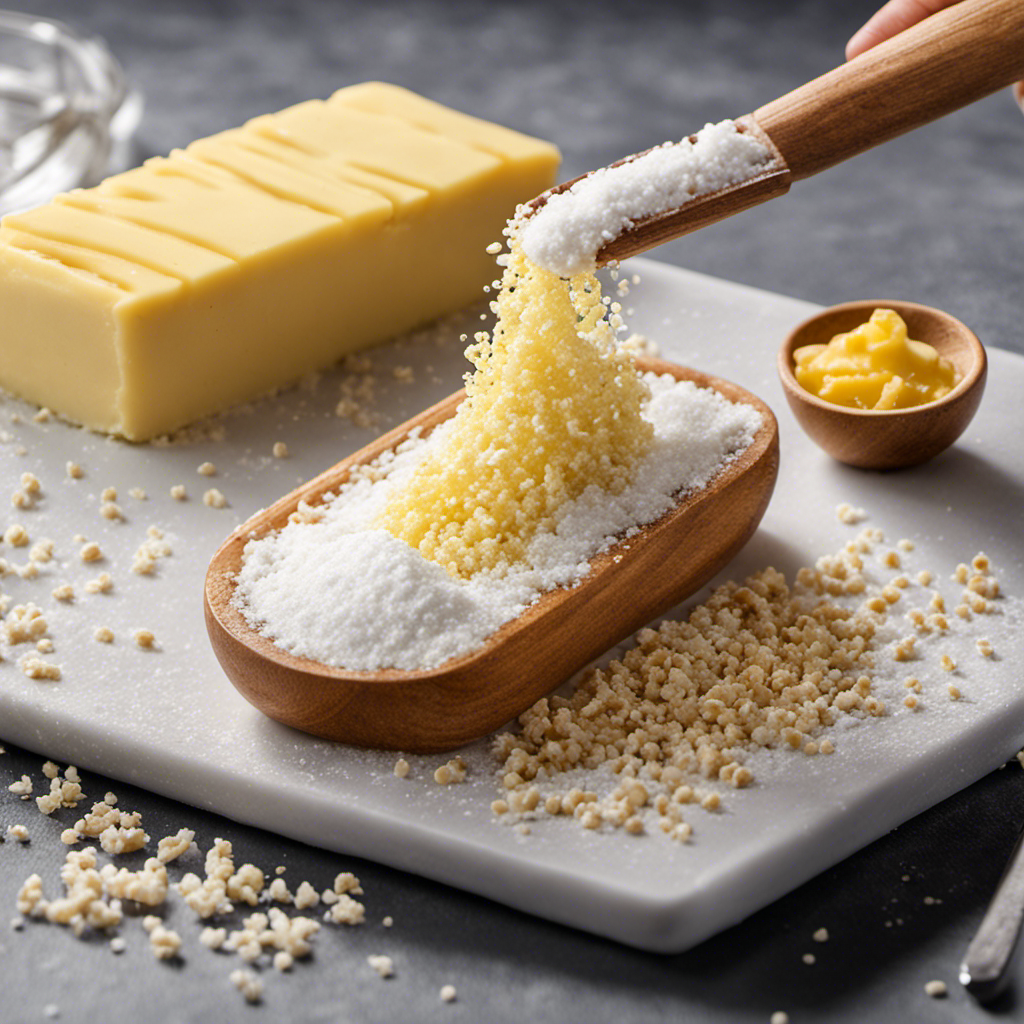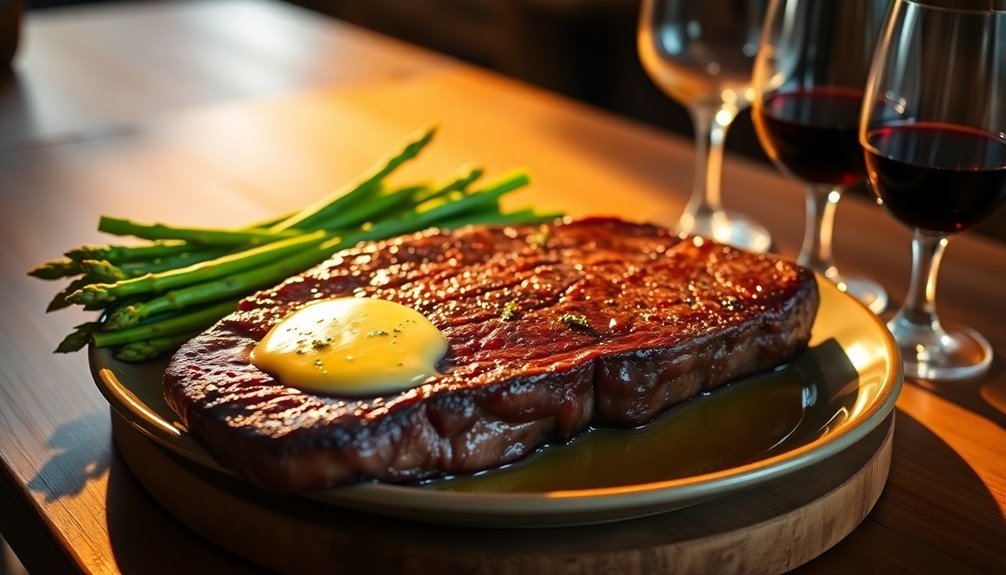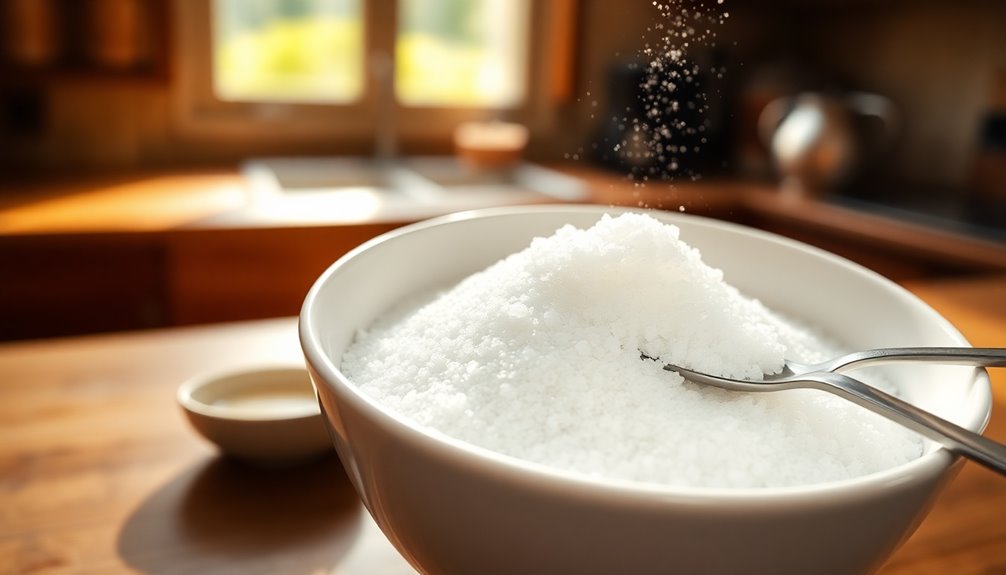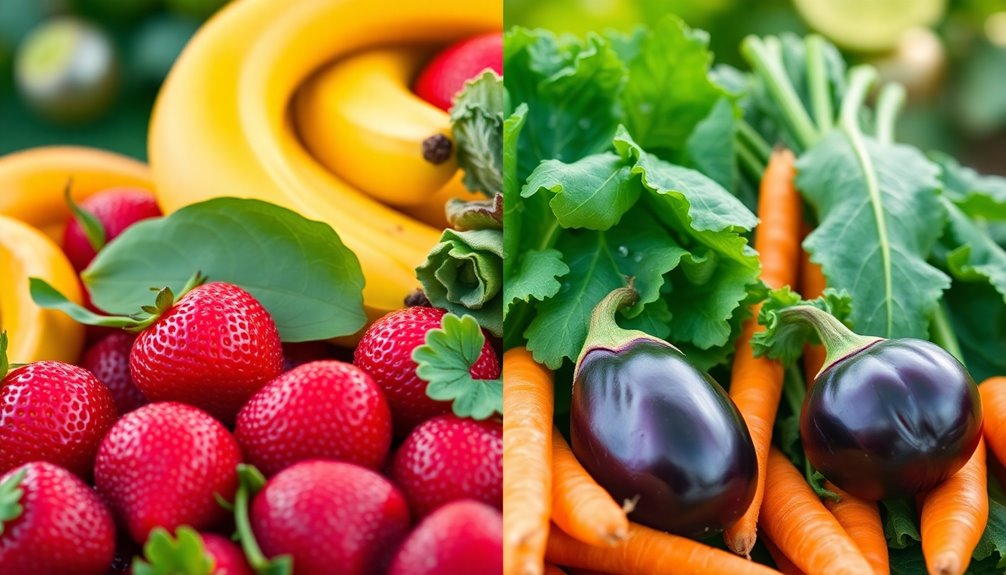I’ve always been curious about the best way to measure 2/3 cup of butter for my recipes. Through some investigating and testing, I’ve found a few reliable techniques. I’ll walk you through how to accurately measure butter, whether you like using a measuring cup, weight, or even the water displacement method. If you want to nail your butter measurements every time, keep on reading.
By the end, you’ll have all the knowledge and confidence you need to perfectly measure 2/3 cup of butter every time. Let’s get started!
Key Takeaways
- There are multiple methods to accurately measure 2/3 cup of butter, including using a kitchen scale, the measurement markings on the butter wrapper, and the water displacement method.
- Using a measuring cup designed for solid fats with markings for cups and tablespoons can ensure accurate butter measurement.
- Softening butter alternatives to room temperature before measuring is important to achieve accurate measurements and maintain the texture and consistency of recipes.
- Alternative measurement techniques such as using a scale, measuring spoon, or converting butter measurements using the stick-to-tablespoon ratio can be employed for precise measurements.
Understanding the Measurement Conversion
To understand the measurement conversion, you’ll need to know how to measure 2/3 cup of butter.
When it comes to measuring butter alternatives, it’s important to know the right techniques. One helpful hack is to use a kitchen scale. Weighing the butter will give you the most accurate measurement.
If you don’t have a scale, you can also use the measurement markings on the butter wrapper. Many butter wrappers have tablespoon markings, so you can measure out the required amount using these markings.
Another option is to use a measuring cup and fill it with water. Then, add chunks of butter until the water level reaches 2/3 cup.
These butter measurement hacks will ensure you get the perfect amount of butter for your recipe.
Using a Measuring Cup
When it comes to accurate butter measurement, understanding the techniques of using a measuring cup is crucial.
In this discussion, I will guide you through the proper way to measure butter using a measuring cup, as well as share some handy tips for converting butter measurements.
With my authoritative guidance, you’ll be able to confidently measure butter for your recipes, ensuring precise and delicious results every time.
Accurate Butter Measurement
You can accurately measure 2/3 cup of butter by using a measuring cup and packing the butter into it firmly.
When it comes to measuring butter alternatives, such as margarine or coconut oil, it’s important to remember that they have different textures and densities compared to butter.
To ensure accurate measurements, here are some tips:
-
Use a measuring cup specifically designed for solid fats. These cups usually have markings on the side to indicate measurements in cups and tablespoons.
-
Soften the butter alternative to room temperature before measuring. This will make it easier to pack it into the measuring cup and achieve a consistent measurement.
-
Avoid common butter mistakes, such as melting the butter alternative before measuring. This can lead to inaccurate measurements and affect the texture and consistency of your recipe.
Measuring Cup Techniques
For accurate measurements, make sure the measuring cup is level with the ingredient.
When it comes to measuring cups, there are a few alternatives you can use if you don’t have the right size on hand. One option is to use a scale to weigh the ingredient instead. This is especially useful when measuring butter, as it can easily be shaped into a uniform block for weighing.
Another alternative is to use a measuring spoon, specifically a tablespoon. Since 1 stick of butter is equal to 8 tablespoons, you can easily measure out 2/3 cup by using 10 and 2/3 tablespoons.
Butter Conversion Tips
To easily convert butter measurements, it’s helpful to know that 1 stick of butter is equal to 8 tablespoons. This knowledge allows for quick and accurate conversions when using alternative forms of measuring butter.
Here are three helpful tips for converting butter measurements:
-
If a recipe calls for 1/2 cup of butter, you can easily measure it by using 1 stick plus 4 tablespoons.
-
To measure 1/4 cup of butter, simply use half a stick or 4 tablespoons.
-
For 1/3 cup of butter, you can use 5 tablespoons plus 1 teaspoon.
By knowing these conversions, you can confidently substitute butter alternatives or adjust measurements as needed.
Now that you have the correct measurements, it’s important to ensure that the butter is softened properly for accurate measurement.
Softening the Butter for Accurate Measurement
When it comes to baking, room temperature butter is essential for achieving the perfect texture and consistency in your recipes.
To quickly soften cold butter, using a microwave is a convenient option. However, it’s important to know the right technique to avoid melting the butter completely.
Room Temperature Butter
Make sure you have butter at room temperature before measuring 2/3 cup. This is important because room temperature butter is easier to measure accurately and incorporate into recipes. When butter is too cold, it can be difficult to measure and may result in an incorrect amount. On the other hand, melted butter can also cause measurement issues as it may not be equivalent to the volume of solid butter.
To ensure you have the right amount of butter, consider these alternative butter measurement techniques:
-
Grating the butter: Use a box grater to grate the butter into small, uniform pieces. This makes it easier to measure the desired amount.
-
Cutting the butter into cubes: Cut the butter into small cubes before measuring. This helps in achieving an accurate volume.
-
Using a kitchen scale: Weighing the butter is the most precise method of measurement. Convert the desired amount of butter to grams or ounces using a kitchen scale.
Using a Microwave
Using a microwave is a quick and convenient way to melt butter for your recipes. When measuring butter alternatives, it’s important to know the proper conversion.
One cup of butter is equal to 2 sticks or 16 tablespoons.
To melt butter in the microwave, start by placing the desired amount of butter in a microwave-safe bowl. Cut the butter into smaller pieces to ensure even melting.
Microwave the butter on high for 10-15 seconds, then check its consistency. If it’s not completely melted, continue microwaving in 5-second intervals until it reaches a smooth and liquid state. Be cautious not to overheat the butter as it can easily burn.
Once the butter is melted, you can transition into the next step of cutting it into tablespoons for measurement.
Cutting the Butter Into Tablespoons
To measure 2/3 cup of butter, cut it into tablespoons. This is a simple and effective way to ensure accurate measurements for your recipes.
Here are three key tips for cutting the butter into tablespoons:
-
Start with a chilled stick of butter: Cold butter is easier to handle and cut into precise measurements. Place the butter in the refrigerator for about 30 minutes before cutting.
-
Use a sharp knife: A sharp knife will make it easier to cut through the butter smoothly and evenly. This will help you achieve consistent tablespoon-sized portions.
-
Measure and cut carefully: Take your time to measure each tablespoon accurately. Use a ruler or a butter dish with tablespoon markings to guide you. Make clean cuts and remove any excess butter to maintain the correct measurement.
Measuring by Weight
Now that we know how to cut the butter into tablespoons, let’s move on to measuring by volume.
When it comes to butter measurement techniques, using a measuring cup is the most common method. To measure 2/3 cup of butter, start by filling a liquid measuring cup with water up to the 2/3 cup mark. Then, add small pieces of butter to the cup until the water level reaches the 1 cup mark. This will ensure that you have precisely 2/3 cup of butter.
Alternatively, you can also use a kitchen scale to measure by weight. Simply place a container on the scale, zero it out, and add butter until it reaches the desired weight of approximately 151 grams.
Both methods provide accurate measurements for your recipes.
Using the Water Displacement Method
When filling a liquid measuring cup with water up to the 2/3 cup mark, you can add small pieces of butter to reach the 1 cup mark. This method, known as water displacement, is a simple and accurate way to measure butter without a scale.
Here’s how it works:
- Fill a liquid measuring cup with water up to the 2/3 cup mark.
- Add small pieces of butter to the water until it reaches the 1 cup mark.
- Pour out the water and butter mixture, leaving behind only the measured amount of butter.
By using the water displacement method, you can easily measure 2/3 cup of butter without the need for a specific measuring tool. It’s a convenient technique that ensures accurate measurements every time.
Now that you know how to measure butter using water displacement, let’s move on to some tips for measuring butter accurately.
Tips for Measuring Butter Accurately
If you want precise measurements of butter, try using a kitchen scale for accuracy.
When it comes to measuring butter alternatives or substitutes, it can be challenging to get the exact amount needed for a recipe.
Using a scale eliminates the guesswork and ensures that you have the right amount every time.
Simply place your container on the scale, set it to zero, and add the butter until you reach the desired weight.
This method is especially useful when working with butter substitutes like margarine or coconut oil, which have different densities than butter.
Frequently Asked Questions
Can I Use Margarine Instead of Butter for This Measurement?
Yes, you can use margarine instead of butter for this measurement. Margarine is a suitable alternative to butter and has its own benefits, such as being lower in saturated fat.
How Can I Soften Butter Quickly if I Need to Measure It Right Away?
To quickly soften butter for immediate measurement, I place it in a microwave-safe dish and heat it in short bursts, checking frequently to prevent melting. Alternative methods include grating frozen butter or using a rolling pin.
Can I Use a Digital Kitchen Scale to Measure Butter?
Yes, a digital kitchen scale can be used to measure butter. By converting the weight of butter from grams to cups, you can accurately measure 2/3 cup of butter using the scale.
Is There a Substitute for Butter if I Don’t Have Any on Hand?
If I don’t have any butter on hand, there are several alternatives I can use as a substitute. Olive oil, coconut oil, and applesauce are all great options for baking or cooking.
Can I Freeze the Butter Before Measuring It to Make It Easier to Cut Into Tablespoons?
Freezing butter makes it easier to measure and cut into tablespoons. It’s a quick way to soften butter. Just freeze it, then use a knife to slice off the desired amount.
Conclusion
In conclusion, accurately measuring 2/3 cup of butter is crucial for ensuring the success of your recipe.
By following the methods outlined in this article, such as using a measuring cup, cutting the butter into tablespoons, or measuring by weight, you can be confident in your measurements.
Remember, precision is key when it comes to baking, so take the time to measure your butter accurately.
Trust me, your delicious creations will thank you!
